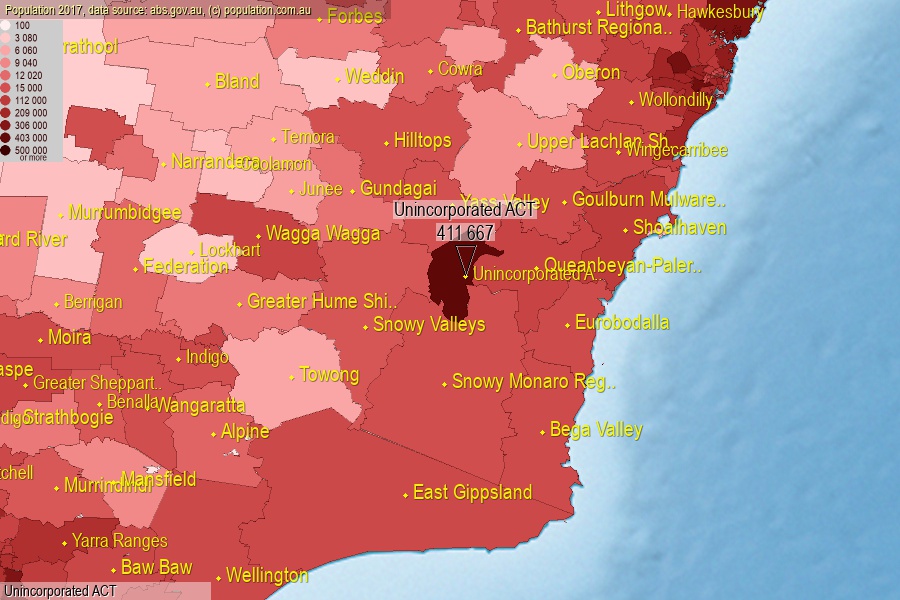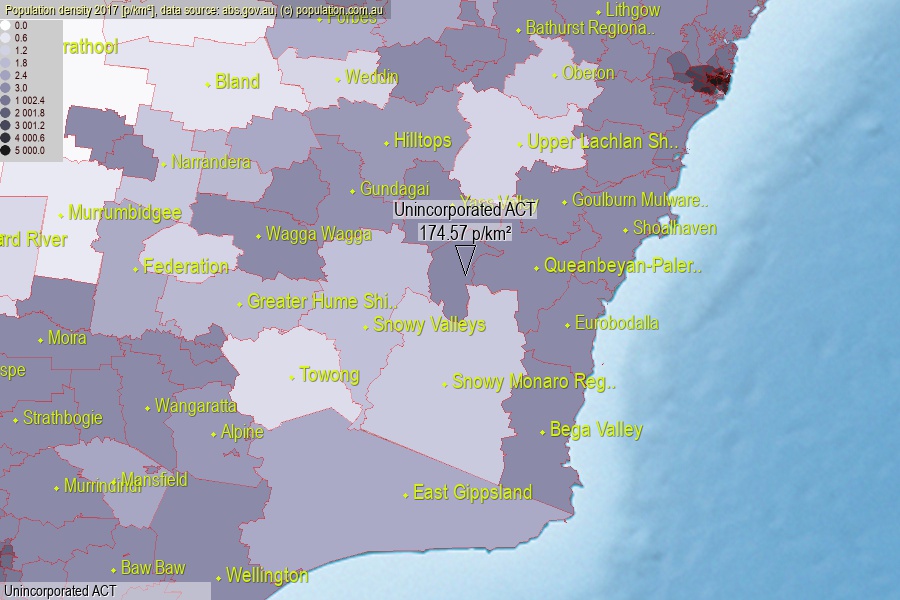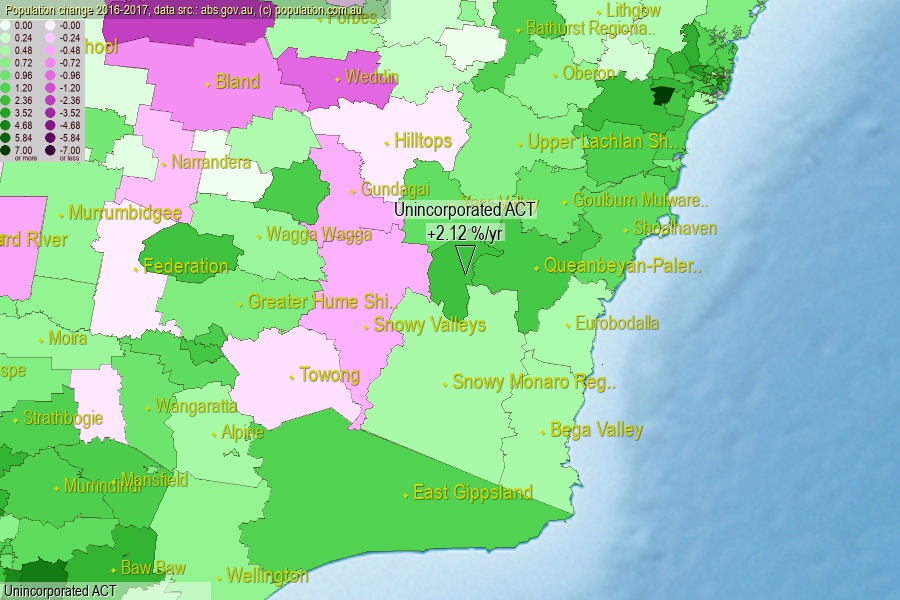 population.com.au
population.com.auLast official estimated population of Unincorporated ACT Unincorporated Areas (as Local Government Area) was 411 667 people (on 2017-06-30)[2]. This was 1.66% of total Australian population and 98.205% of ACT population. Area of Unincorporated ACT is 2 358.20 km², in this year population density was 174.57 p/km² . If population growth rate would be same as in period 2016-2017 (+2.12%/yr), Unincorporated ACT population in 2025 would be 487 055. [0]



Click to enlarge. Unincorporated ACT is located in the center of the images.
Population [people], population density [p./km²] and population change [%/year] [2]
[1996-2001] +1.46 %/Y
[2001-2002] +0.96 %/Y
[2002-2003] +0.84 %/Y
[2003-2004] +0.48 %/Y
[2004-2005] +0.75 %/Y
[2005-2006] +1.14 %/Y
[2006-2007] +2.23 %/Y
[2007-2008] +1.67 %/Y
[2008-2009] +1.84 %/Y
[2009-2010] +1.97 %/Y
[2010-2011] +1.72 %/Y
[2011-2012] +2.32 %/Y
[2012-2013] +1.78 %/Y
[2013-2014] +1.45 %/Y
[2014-2015] +1.80 %/Y
[2015-2016] +1.84 %/Y
[2016-2017] +2.12 %/Y
[0] Calculated with linear interpolation from officially estimated population
[1] Read more about LGA and Australian Statistical Geography Standard (ASGS) on abs.gov.au
[2] Population data from Australian Bureau of Statistics (Population and density: 2017; change: 2016-2017)
[3] Digital Boundaries: Australian Statistical Geography Standard (ASGS) 2016.